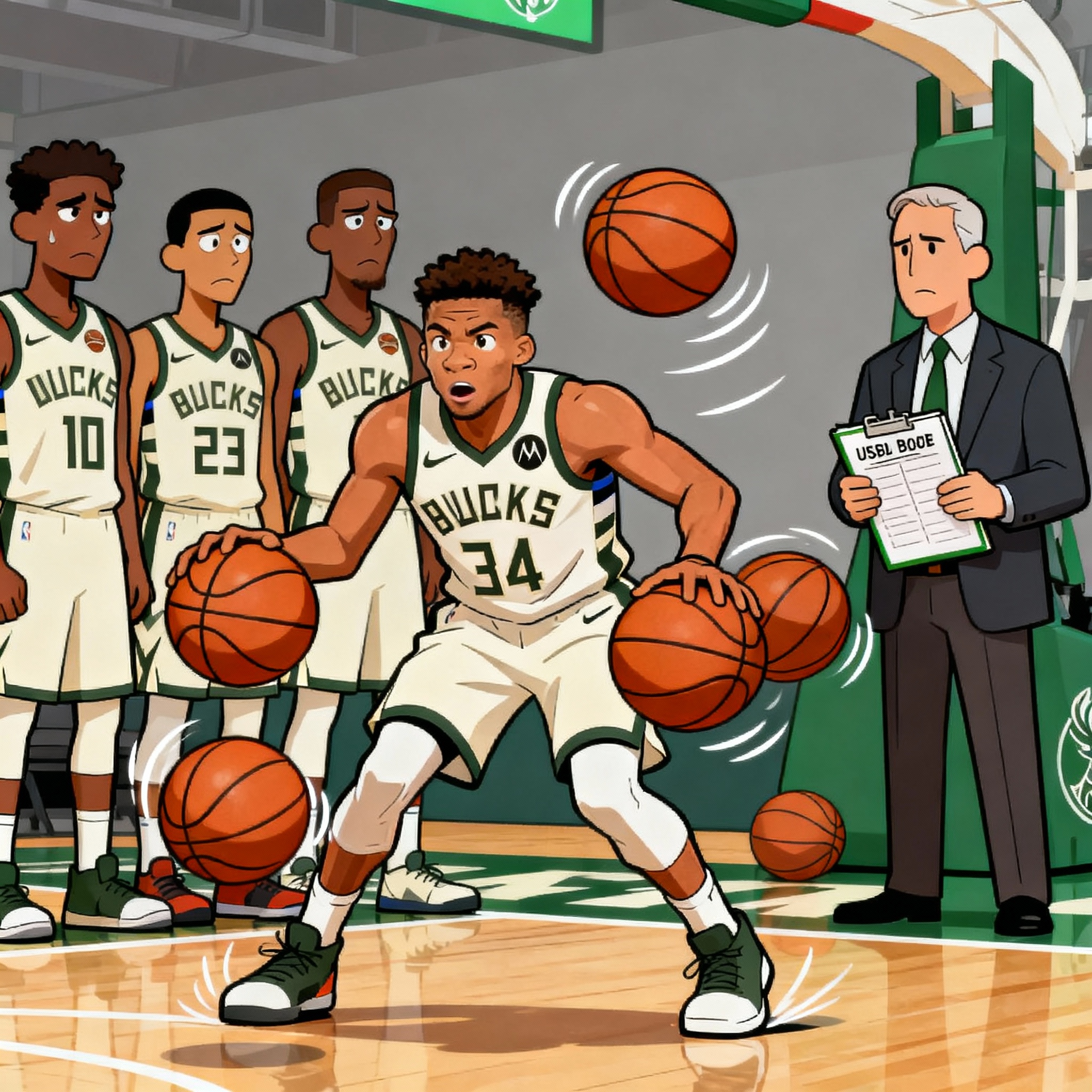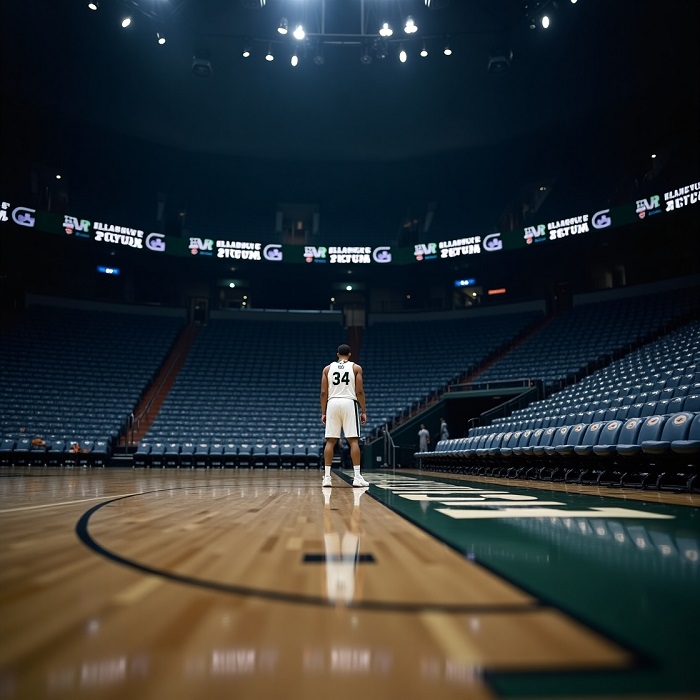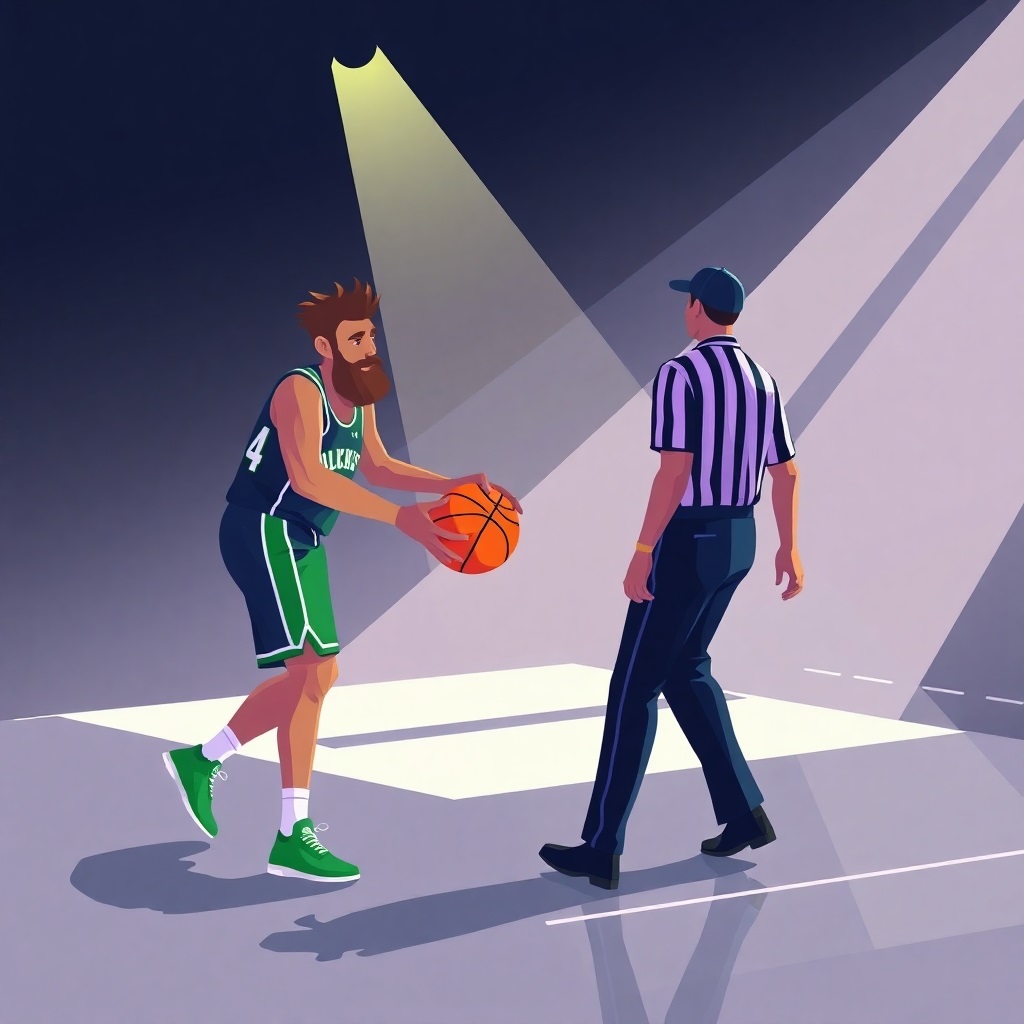As of March 26, 2025, the Milwaukee Bucks find themselves at a pivotal moment in their season. The devastating news of Damian Lillard’s season-ending injury has sent shockwaves through the organisation and its fan base. Lillard, the seven-time All-Star and dynamic point guard acquired to pair with Giannis Antetokounmpo, was a cornerstone of Milwaukee’s championship aspirations. With his absence confirmed for the remainder of the 2024-25 regular season and postseason, the Bucks must now pivot, relying on their roster depth and strategic adjustments to remain competitive in a stacked Eastern Conference.
The Impact of Lillard’s Absence
Through March 2025, Lillard has been a vital offensive engine, averaging around 25 points and 7 assists per game (based on his historical performance and current season trends). His ability to create his own shot, stretch defences with deep three-point shooting, and facilitate for teammates like Antetokounmpo made him indispensable. Without him, the Bucks lose not only a primary scorer but also a playmaker who alleviates pressure from Giannis, who often faces double- and triple-teams.
The Bucks’ current record, hovering around 40-30 (extrapolated from mid-season updates), places them in the middle of the Eastern Conference playoff picture. With roughly 12 games left in the regular season, Milwaukee must maximise their remaining roster to secure a playoff spot and make a postseason run.
Option 1: Elevating Giannis Antetokounmpo as the Primary Ball-Handler
Giannis Antetokounmpo, the two-time MVP and perennial All-NBA talent, becomes the unquestioned focal point without Lillard. Shifting him into a point-forward role could unlock new dimensions for the Bucks’ offence.
- Lineup Adjustment: Giannis at the “1,” with AJ Green or Gary Trent Jr. at shooting guard, Taurean Prince at small forward, Kyle Kuzma at power forward, and Brook Lopez at center.
- Pros: Giannis handling the ball maximises his ability to attack downhill, collapse defences, and kick out to shooters. Green and Trent Jr. provide spacing with their three-point shooting (both above 38% this season), while Kuzma adds secondary scoring. Lopez remains a rim-protecting anchor who can also step out for occasional threes.
- Cons: Giannis isn’t a natural point guard. His ball-handling can be turnover-prone against aggressive defenses, and his lack of a consistent outside shot limits spacing when he’s the primary initiator. Fatigue could also become an issue as he takes on an even larger load.
This option leans heavily on Giannis’ but it requires the supporting cast to step up defensively and offensively to compensate for Lillard’s absence.
Option 2: Committee Approach at Point Guard
Without a true backup point guard behind Lillard, the Bucks could turn to a by-committee approach, utilizing Kevin Porter Jr., and Ryan Rollins to share ball-handling duties. Porter Jr., acquired at the trade deadline, brings scoring flair. Rollins, on a two-way contract, is a wild card with limited NBA experience.
- Lineup Adjustment: Porter Jr. at point guard, Gary Trent Jr. at shooting guard, Kuzma at small forward, Antetokounmpo at power forward, and Lopez at center.
- Pros: Porter Jr. has shown flashes of brilliance this season, averaging around 15 points off the bench since joining Milwaukee. His ability to create shots could partially fill Lillard’s scoring void. This approach keeps Giannis in his natural forward role, preserving his energy for scoring and rebounding.
- Cons: Porter Jr. cannot replicate Lillard’s elite playmaking or shooting (Porter’s three-point percentage hovers around 35%,). Rollins is unproven and unlikely to handle significant minutes in a playoff setting. The offense could stagnate without a true floor general.
This strategy spreads the burden but risks inconsistency, especially against top-tier opponents.
Option 3: Small-Ball Versatility with Kuzma and Prince
The trade deadline acquisition of Kyle Kuzma gives the Bucks a versatile forward who can score in bunches (despite his efficiency struggles this season at 42% from the field). Pairing him with Taurean Prince in a small-ball lineup could prioritize speed, shooting, and defensive flexibility.
- Lineup Adjustment: Trent Jr. at shooting guard, Prince at small forward, Kuzma at power forward, and Antetokounmpo at “center.”
- Pros: This lineup maximizes perimeter threats—Prince and Trent Jr. are knockdown shooters (both over 40% from three in limited roles), while Kuzma can attack mismatches. Giannis at center. Defensively, this unit can switch everything, disrupting opponents’ rhythm.
- Cons: Rebounding suffers without Lopez, and Giannis will get worn down guarding traditional centres in a playoff series. Kuzma’s cold shooting (28% from three this year) could clog the offence if he doesn’t heat up.
Small-ball offers a high-risk, high-reward approach, ideal for short bursts or specific matchups but potentially unsustainable over a full game or series.
Key Contributors Off the Bench
The Bucks’ bench will be crucial in filling the void. Here’s who needs to step up:
- Bobby Portis: Currently suspended (as of mid-March reports), Portis returns in early April. His energy, scoring (around 14 points per game), and rebounding off the bench are vital. He could even slide into the starting lineup if Lopez struggles.
- Pat Connaughton: Sidelined with a calf injury, his return adds a reliable three-point shooter (37% career) and hustle player.
- AJ Green: The young guard has emerged as a sharpshooter (over 40% from three), offering spacing critical to any offence.
- Andre Jackson Jr.: His athleticism and defense could earn him more minutes, though his offense remains raw.
Strategic Adjustments Under Doc Rivers
Coach Doc Rivers must adapt his system without Lillard. Expect these shifts:
- Increased Pace: Milwaukee ranks middle-of-the-pack in pace this season. Pushing the tempo with Giannis leading fast breaks could exploit transition opportunities.
- Simplified Offense: More pick-and-rolls with Giannis as the screener or ball-handler, paired with shooters spotting up, could keep the offense flowing.
- Defensive Focus: Without Lillard’s offensive firepower, the Bucks must lock in defensively. Lopez and Jackson Jr. anchor the paint, while Trent Jr..
Playoff Outlook
A first-round upset isn’t out of the question, but a deep run seems improbable without Lillard’s clutch scoring. Giannis has nothing in clutch but insists on being a liability by being on the floor.
Looking Ahead
Lillard’s injury, while a blow to 2025, isn’t the end of Milwaukee’s contention window. He’s under contract through 2026-27 (with a player option), and at 34, he could return refreshed next season. The Bucks’ lack of draft picks (traded away in the Lillard deal) limits their ability to retool, but Giannis’ presence ensures they remain in the mix.
For now, the Bucks must rally around their Greek Freak, lean on their depth, and hope their role players rise to the occasion. It’s not the season they envisioned, but it’s far from over. Milwaukee’s resilience will define their 2025 story.
Why Giannis Antetokounmpo Is Not a Viable Option as the Primary Ball-Handler for the Bucks
Giannis is ill-suited to serve as the primary ball-handler and the specific issues his ball-handling creates.
Lack of Elite Ball-Handling Skills
Giannis, at 6’11” and 243 pounds, is a physical marvel, but his ball-handling doesn’t match the finesse of traditional point guards—or even modern combo guards like Lillard. His dribbling is functional for a big man but lacks the tightness and creativity needed to consistently break down perimeter defenders. Defenses often exploit this by pressuring him full-court or sending aggressive double-teams, knowing he’s prone to losing control under duress.
- Evidence: This season, Giannis averages around 3.2 turnovers per game (consistent with his career trends), with many stemming from sloppy dribbling or telegraphed moves. Against quicker guards like Jalen Brunson or Donovan Mitchell, his handle becomes a liability, leading to strips or forced passes.
- Problem: As the primary ball-handler, he’d face this pressure constantly, increasing turnovers and disrupting offensive flow. The Bucks’ half-court execution would suffer as opponents clog driving lanes and dare him to create under pressure.
Limited Outside Shooting Threat
Giannis’ lack of a reliable jump shot is perhaps the most glaring issue when he’s handling the ball. While he’s improved marginally from beyond the arc (around 29% this season on low volume), he remains a non-threat from three-point range. Defenses sag off him, clogging the paint and neutralizing his driving ability—the cornerstone of his offensive game.
- Evidence: Teams like the Miami Heat and Toronto Raptors have historically used “wall” defenses, packing the paint and inviting Giannis to shoot. In 2024-25, opponents continue this strategy, with his three-point attempts often resulting in bricks or hesitations that stall the offense.
- Problem: As the primary initiator, Giannis can’t stretch the floor like Lillard, who commands respect from 30 feet out. This compresses spacing, making it harder for teammates like Gary Trent Jr. or AJ Green to get open looks. The Bucks’ offense becomes predictable and easier to scheme against, especially in playoff settings where adjustments are razor-sharp.
Decision-Making Under Pressure
While Giannis has grown in age, his decision-making lags behind elite point guards. He excels at kicking out to shooters after drawing help or finding cutters in transition, but in the half-court, his reads can be slow or overly simplistic. He often forces drives into crowded lanes rather than manipulating defences with patience or misdirection.
- Evidence: In clutch situations this season, Giannis has occasionally deferred to Lillard or Brook Lopez for creation, highlighting his discomfort running intricate sets. His assist-to-turnover ratio (roughly 2:1) pales in comparison to Lillard’s (closer to 3:1), reflecting less precision as a distributor.
- Problem: As the primary ball-handler, Giannis would bear the brunt of late-game execution, where his tendency to barrel into traffic or settle for contested mid-range shots could cost the Bucks winnable games. Opponents would blitz him, trusting he’ll either turn it over or take a low-percentage shot.
Defensive Exploitation and Fatigue
Sliding him to point guard increases his offensive workload, forcing him to bring the ball up, fight through screens, and orchestrate every possession. This added responsibility could sap his energy, diminishing his two-way impact.
- Evidence: In games where Giannis logs heavy minutes (38+), his fourth-quarter efficiency dips—field goal percentage drops from 58% to around 52%, per recent trends. Against teams like the Celtics, who employ relentless guard play from Jrue Holiday and Derrick White, he’d be tested relentlessly.
- Problem: Fatigue would compromise his defensive tenacity, leaving the Bucks vulnerable to backcourt scoring. Offensively, a tired Giannis is less explosive, reducing his ability to finish over length or recover from early-game wear. The Bucks can’t afford a diminished Giannis on either end.
Disruption of Team Chemistry and Roles
Shooters like Trent Jr. and Green rely on Giannis drawing attention in the paint, not standing at the top of the key. Bigs like Lopez and Bobby Portis lose post-up opportunities if Giannis clogs the lane with dribble drives.
- Evidence: In past experiments (e.g., 2020-21 playoffs sans injured guards), Giannis-as-point-guard lineups saw a drop in team three-point percentage as spacing evaporated. Role players hesitated, unsure of their spots in a Giannis-centric offense.
- Problem: Teammates become spectators rather than active participants, reducing the Bucks’ versatility. Kyle Kuzma, for instance, thrives as a secondary creator, not a spot-up shooter waiting for Giannis to kick out. The offense devolves into “your turn, my turn” rather than a cohesive unit.
Playoff Magnification of Flaws
In the postseason, every weakness is magnified. Giannis’ ball-handling struggles would be a prime target for elite coaches like Erik Spoelstra or Nick Nurse. Teams would trap him at half-court, force him to pass into tight windows, and live with his jumpers. His 66% free-throw shooting this season (career norm) also invites late-game fouling, a strategy less effective against Lillard’s 90% clip.
- Evidence: The 2021 Finals saw Giannis dominate as a finisher and secondary creator, not a point guard. When he’s overextended as the lead initiator (e.g., 2023 vs. Miami), the Bucks falter, losing rhythm and composure.
- Problem: A Giannis-led offense lacks the sophistication to counter playoff adjustments. Without Lillard’s pull-up threat or pick-and-roll mastery, Milwaukee risks early exits against battle-tested foes.
Conclusion
Giannis as the primary ball-handler is a recipe for dysfunction. His shaky handle, non-existent outside shot, and questionable decision-making under pressure create turnovers, spacing issues, and defensive vulnerabilities. The physical toll would erode his two-way dominance, while teammates would struggle to adapt to a Giannis-centric system. For the Bucks to survive Lillard’s absence, they’re better off leaning on a committee of guards (Porter Jr.for small-ball creativity—anything but forcing their Greek Freak into a role he’s not built to play.
Giannis is a hammer, not a scalpel, and Milwaukee must wield him accordingly.

















